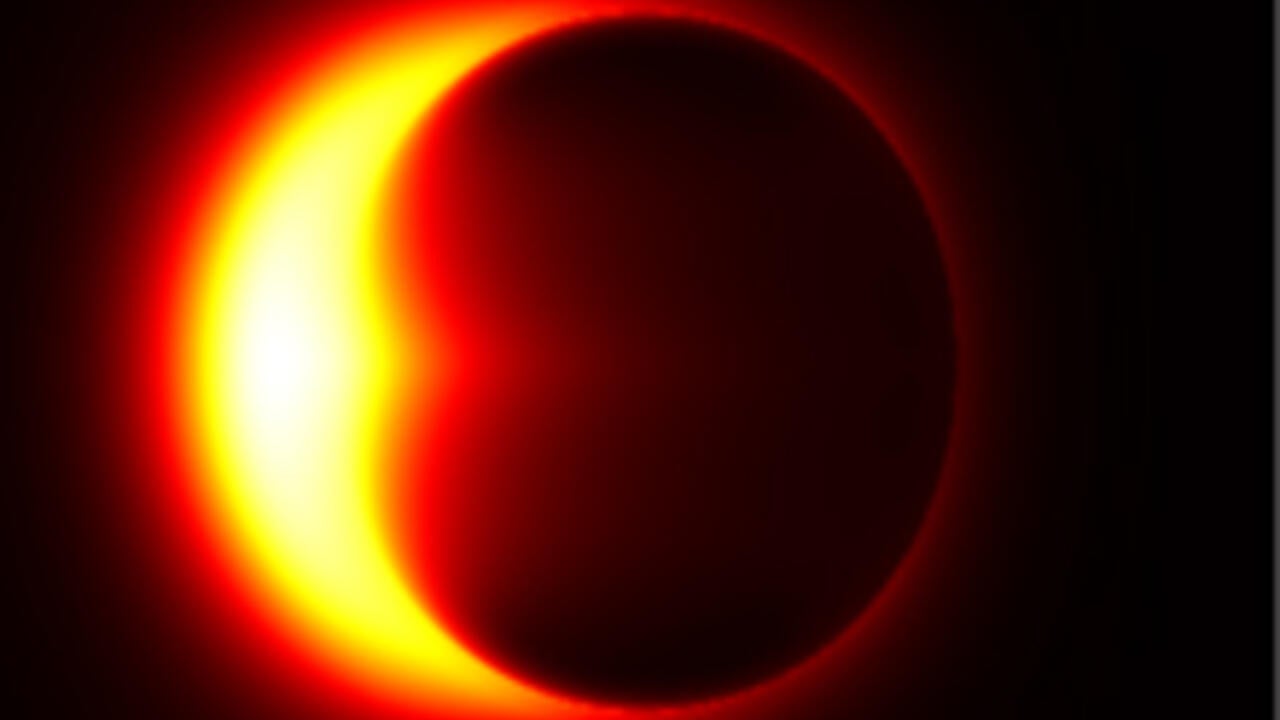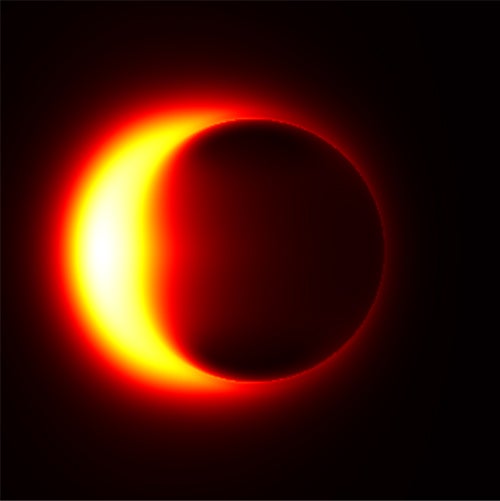
Putting Einstein’s theory of general relativity to the test
Waterloo astrophysicists will test Einstein’s theory within a supermassive black hole at the center of the Milky Way

Waterloo astrophysicists will test Einstein’s theory within a supermassive black hole at the center of the Milky Way
By Victoria Van Cappellen Faculy of ScienceUniversity of Waterloo astrophysicists are leading a team of researchers who have devised a new way to test Einstein’s theory of general relativity within Sagittarius A* - the supermassive black hole at the center of the Milky Way.
Tim Johannsen and Avery Broderick, along with international colleagues, will use the new method in gravitational conditions that are so extreme, the results will usher in a new era in gravitational research, validating – or disproving – general relativity in its most exotic manifestations.
“Based on the observations we expect to make this spring with the Event Horizon Telescope, we’ll be able to make incredibly precise statements about the nature of this black hole,” says Johannsen, also a post-doctoral fellow at the Perimeter Institute for Theoretical Physics. “It’s unprecedented, the resolution and sensitivity of the data we’ll be working with.”

A simulated image of the black hole Sagittarius A*. A circular shadow would prove general relativity is valid. More complicated shapes like an oval or heart would prove general relativity must be corrected within strong gravitational regimes.
The Event Horizon Telescope is a global array of radio telescope sites spanning the Earth, creating a receiver the size of our planet. Its primary purpose is to image two supermassive black holes: Sagittarius A* and another located in the centre of the M87 galaxy. Images are captured not in visible light, but in the radio portion of the electromagnetic spectrum.
Taking it to the limit
The researchers’ method, which appeared in a recent issue of the prestigious journal Physical Review Letters, proposes to compare predictions made by general relativity against the first-ever, live image of Sagittarius A*, a black hole four million times the mass of our own sun.
Their calculations explore what Sagittarius A* will look like if general relativity holds up, but more importantly what it might look like if the theory’s predictions fail.
“This is how science works,” says Johannsen. “Every theory has to be validated experimentally with an ever increasing level of precision.”
Until now, general relativity has for the most part only been tested where gravity is weak and Einstein makes a small correction to Newton’s theory. While reassuring, this means that the application of general relativity to its most extreme environments, where it is not bit player but the star, is fraught with extrapolation. Even the Laser Interferometer Gravitational-Wave Observatory’s (LIGO) ground-breaking detection of gravitational waves earlier this year essentially assumed general relativity was valid under the extreme conditions of a binary black hole merger.
“General relativity is the absolute standard in gravitational theory and it’s passed all the tests in the weak field regime, but it could still totally fail around black holes where gravity is many orders of magnitude stronger than anything we’ve tested before,” says Johannsen.
An image worth more than a thousand words
A black hole is so compact that neither matter nor light can escape its extreme gravity. Within general relativity, black holes were first predicted by Karl Schwarzschild exactly one hundred years ago as a seemingly impossible solution to Einstein’s field equations: Create an object with zero volume and you create an infinite abyss in the fabric of spacetime.
What better place to test the limits of Einstein’s theory of general relativity?
To do this, the scientists will compare their predicted model image with the long-anticipated image of Sagittarius A* from the Event Horizon Telescope. This will be the first time we will actually see a black hole itself.
According to general relativity, a black hole such as Sagittarius A* should exhibit a nearly circular shadow based on just two properties – mass and spin. This is a direct consequence of the simplicity of black holes in Einstein’s theory. If the researchers find that the shadow requires additional parameters, for example, if it is oval or heart-shaped, then general relativity must be incomplete.
“Just like general relativity is a small correction to Newtonian gravity in our solar system, we may also need such a correction to general relativity in a strong gravitational regime,” says Johannsen.
Preliminary findings using only three of eight Event Horizon Telescope sites support Einstein’s theory of general relativity. But when all eight sites come online this spring, the observations will be so sensitive and sharp that their conclusion will be almost absolute.
Avery Broderick is an associate professor in the Department of Physics and Astronomy at the University of Waterloo and a faculty member at the Perimeter Institute for Theoretical Physics.
Co-authors also include former Physics and Astronomy master’s student Carlos Wang, Shepard Doeleman at the Smithsonian Astronomical Observatory, Vincent Fish of MIT, Abraham Loeb of Harvard University, and Dimitrios Psaltis of the University of Arizona.

Read more
Here are the people and events behind some of this year’s most compelling Waterloo stories

Read more
Meet five exceptional Waterloo graduate students crossing the convocation stage as Class of 2025 valedictorians

Read more
From co-op to startup: Waterloo students develop an AI platform that uses real-time data for wildfire prediction and early prevention
The University of Waterloo acknowledges that much of our work takes place on the traditional territory of the Neutral, Anishinaabeg, and Haudenosaunee peoples. Our main campus is situated on the Haldimand Tract, the land granted to the Six Nations that includes six miles on each side of the Grand River. Our active work toward reconciliation takes place across our campuses through research, learning, teaching, and community building, and is co-ordinated within the Office of Indigenous Relations.